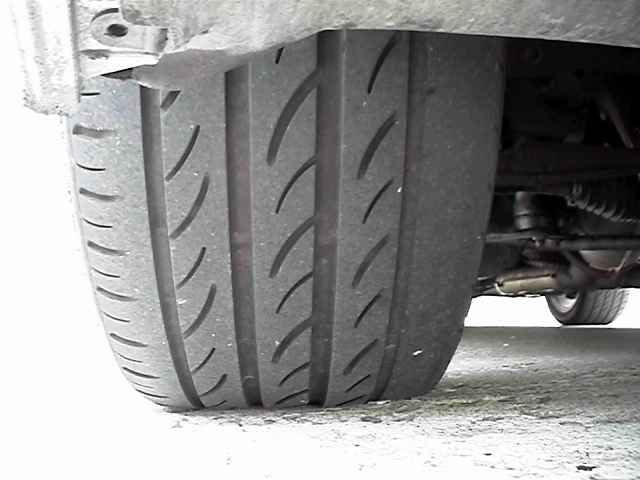Your car or truck’s tires work very hard. Tires are the only link between the vehicle and the road, and they must handle the forces of acceleration, braking and turning for a vehicle that weighs a couple of tons! Of course you’re going to see tire wear, but the longer you can make your tires last, the less money you will spend maintaining this part of your automobile.
So, what can you do to make your tires last longer? Spotting abnormal tire wear and correcting the cause can significantly extend tire life.
Normally, tires will wear evenly across their surface until they reach the wear bars, which are 2/32nds of an inch above the bottom of the tread. When the tires are worn to the wear bars, they should be replaced. If the tires are wearing unevenly across their surface, it usually means something is wrong and needs to be corrected. Here are some common types of tire wear and their causes:
IF THERE IS more wear in the middle of the tire tread, THEN the tire is overinflated.
IF THERE IS more wear on both edges of the tire tread, THEN the tire is underinflated.
IF THERE IS wear on one edge but not the other, THEN the wheel alignment is out of specification.
IF THERE IS uneven wear (alternating high and low) on the outer edge, known as “feathering”, THEN the wheel alignment is out of specification or the tires have not been properly rotated.
IF THERE IS indentation on the tire surface, known as “cupping” The shocks, struts, or other suspension components are damaged or worn, causing erratic vertical forces on the tires.
Some uneven tire wear on the front tires of front wheel drive, four wheel drive, and all wheel drive vehicles is caused by the fact that the car is asking the tires to do 2 conflicting things at once: steer the car and pull it down the road.
Since the tire is trying to go forward and sideways at the same time, it scrubs as it turns, creating uneven wear. Over time, this appears as tire feathering, which causes the car to vibrate and make a whup-whup-whup noise going down the road.
The corrections for abnormal tire wear always start with regular inspections. Check your tire pressures at least once every month, and especially when the seasons change, as changing temperatures will cause your tire pressures to change.
Check the tread depth at each tread groove with a depth gauge, which can be purchased inexpensively at most parts stores. Turn your front wheels to their stops in each direction and inspect the surface of each tire for abnormal wear.
Most unusual tire wear will occur on your front tires, because they are always turning, whereas the rear tires are always going straight (if they aren’t, you probably need to visit our body shop!).
Lastly, run your hand flat along the tread of the tire, the same way that the tire rolls going down the road, to check for tire feathering and cupping. You may not be able to see this wear, but you will be able to feel it.
Along with regular inspections, regular tire rotations will reduce tire wear because of the different demands each axle places on the tires. Since the rear wheels are pretty much always going straight, over time the light tire feathering caused by the demands of the front end will be smoothed out by the rear, if the tires are rotated regularly. A wheel alignment performed as soon as abnormal wear is detected will stop the wear, and costs a good bit less than one tire, let alone a set.
Like most other things that involve maintaining your car, a little knowledge and time can save you big headaches and money down the road. If you would rather have someone else keep an eye on these things for you, the team at Georgia Square Collision will be happy to oblige.

What Causes Abnormal Tire Wear, and How Do You Prevent It?
by
Tags:

Leave a Reply